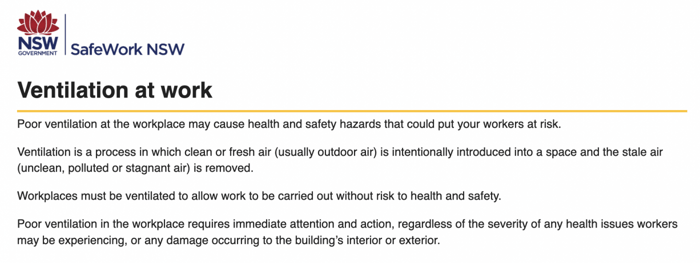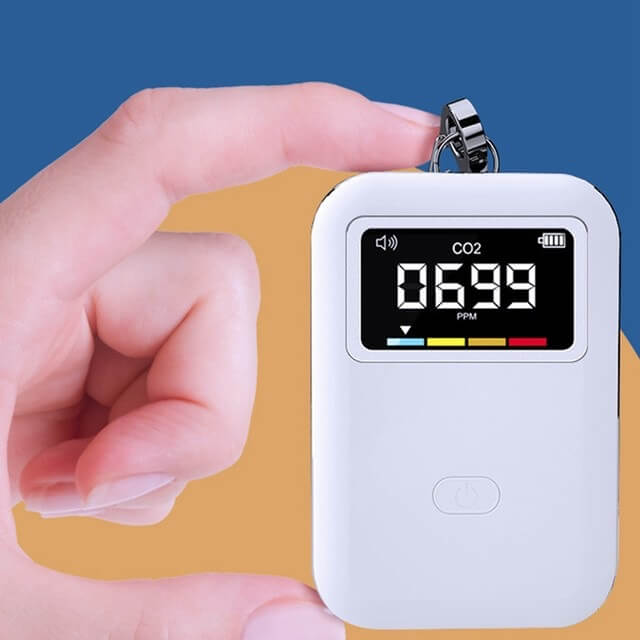
Ventilation at work - from SafeWork NSW
Ventilation at work
Poor ventilation at the workplace may cause health and safety hazards that could put your workers at risk.
Ventilation is a process in which clean or fresh air (usually outdoor air) is intentionally introduced into a space and the stale air (unclean, polluted or stagnant air) is removed.
Workplaces must be ventilated to allow work to be carried out without risk to health and safety.
Poor ventilation in the workplace requires immediate attention and action, regardless of the severity of any health issues workers may be experiencing, or any damage occurring to the building’s interior or exterior.
What are the harms?
Harmful ventilation systems in the workplace create an atmosphere where minimal air movement results in the accumulation of contaminated air, exposing workers to potentially hazardous conditions for the duration of their working day. They may then suffer the health effects beyond the workplace.
Problems may include:
How does ventilation affect the health and safety of your workers?
Ventilation at the workplace can have positive and negative impacts on building occupants. Good ventilation systems enable productive workplaces, providing an environment for workers to remain alert, productive, and focused on their work tasks. Poor ventilation systems, however, can cause potential health problems resulting in decreased productivity and increased sick leave.
Good ventilation systems:
Poor ventilation can result in workers suffering:
These health effects often are not noticeable immediately at the workplace and therefore workers may not associate these symptoms with poor ventilation in the office building.
An indication there may be a problem with workplace ventilation is when a worker experiencing these symptoms improves after they leave the workplace or has been away for an extended time, such as over a weekend or on a vacation.
The psychological health of workers may also be affected by poor ventilation as people continue to work in surroundings affecting their health, which may contribute to conditions such as stress, anxiety or depression. The reality that some workers have financial commitments preventing them from finding alternative work and/or limited control or influence over their immediate workplace environments may also compound this problem.
For access to the full link click here: https://www.safework.nsw.gov.au/hazards-a-z/ventilation-at-work
How safe is the air you’re breathing at work? Why not check out our mini carbon dioxide monitors by clicking on the image below:





